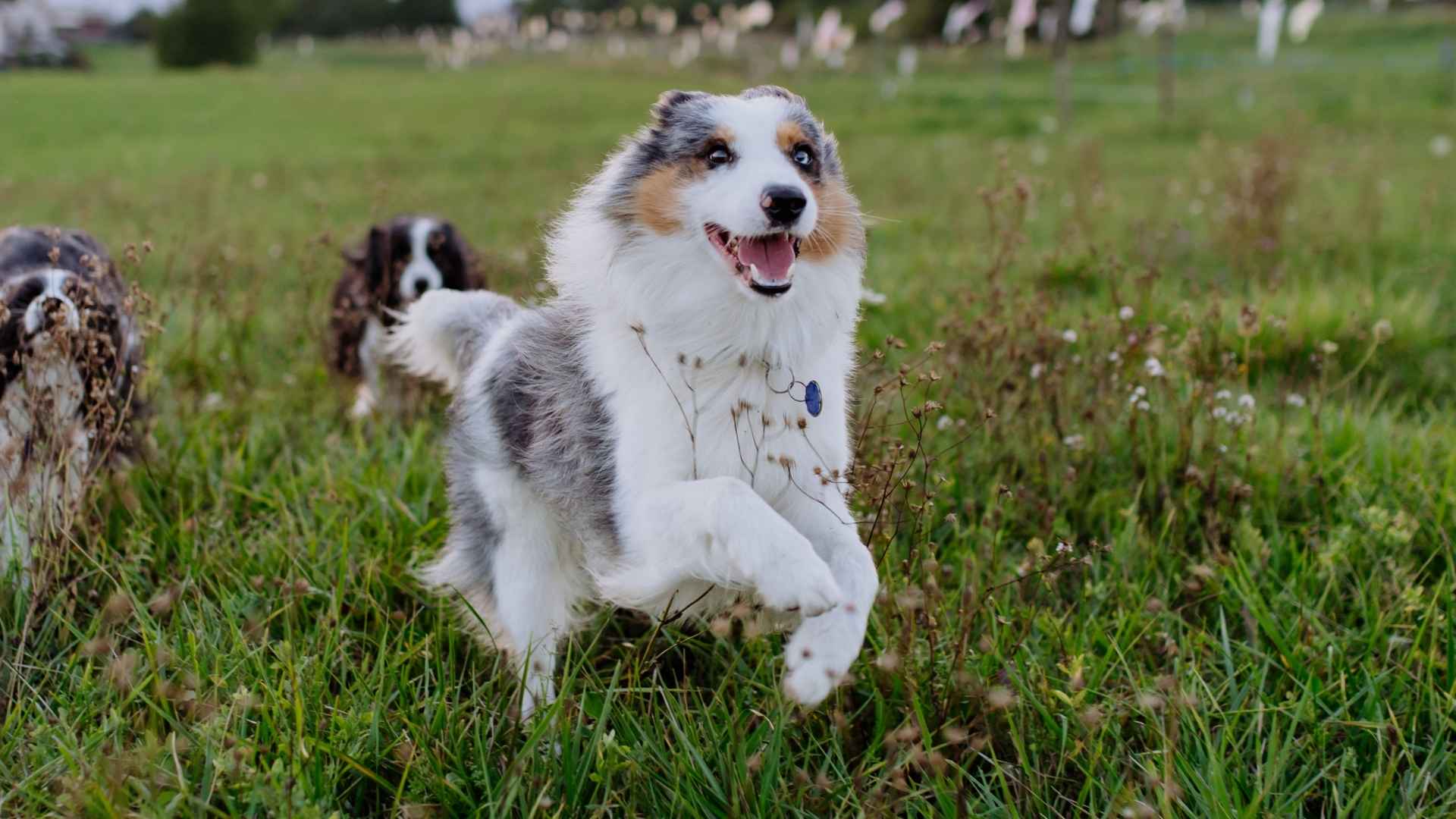When it comes to dog behaviour, it’s important to remember that nature and nurture go hand in hand. Just like humans, dogs are shaped by their environment, upbringing, and the care they receive. Even the most well-meaning pup can develop troubling traits if subjected to neglect or poor training.
That said, some breeds are hardwired with dominant personalities, high energy, and a natural inclination toward assertiveness—traits that can become dangerous in the wrong hands.
While many family dogs appear friendly and harmless, statistics reveal a more sobering truth: thousands of people suffer dog bites each year, with mild to severe injuries. These encounters can result in medical emergencies, legal battles, and even loss of life.
In this blog, we explore the most vivacious dog breeds, noted for their intensity and temperament, and why they’re best suited for experienced, responsible owners who understand the weight of that responsibility.
Most Vivacious Dog Breeds
1. Jack Russell Terrier
Originally bred in 19th-century England for fox hunting, the Jack Russell Terrier was developed by Rev. John “The Sporting Parson” Russell. Though the exact mix of breeds used remains unclear, it’s believed that Bull Terriers and Beagles shaped this spirited little dog.
Don’t be fooled by their compact size—Jack Russells are packed with energy and drive, making them one of the most vivacious small breeds around.
These terriers are naturally inquisitive, bold, and highly active. Their strong prey drive and love for digging, chasing, and exploring make them adventurous companions, but they’re not ideal for households with smaller pets. Without proper outlets for their energy, they can easily become destructive or mischievous.
Training a Jack Russell can be challenging due to their short attention spans and independent streak, but using playful methods and treats works wonders. They make great watchdogs thanks to their alertness, though they aren’t suited for protection roles, according to Britannica.
Best matched with energetic owners, Jack Russells thrive in homes where daily activity and mental stimulation are part of the routine.
2. Doberman Pinscher
The Doberman Pinscher was never meant to be a lapdog. Bred in late 19th-century Germany by tax collector Louis Dobermann, this breed was designed for personal protection in risky environments.
By mixing Rottweilers, Greyhounds, Weimaraners, German Pinschers, and black-and-tan Terriers, Dobermann aimed to create a dog that combined strength, speed, and intelligence. The result? a sleek, alert, and fearless companion that could guard its owner without hesitation.
While early Dobermans were more aggressive than today’s version, decades of careful breeding have softened their temperament without dulling their natural guarding instincts. With their lean frame, intense gaze, and confident stance, Dobies still carry an intimidating presence, often portrayed as the “mean dog” in films.
Dobermans are highly intelligent and eager to please, making them excellent candidates for training when handled with consistency and calm authority. Without proper guidance, their protective nature can become overbearing. Socialization from a young age is crucial, especially since they may struggle with other dogs or small pets if not introduced properly.
Despite their reputation, Dobermans are total softies with their families. They thrive on companionship and love being involved in daily life. They’re vigilant, not vicious—more likely to cuddle up after a long day than cause trouble.
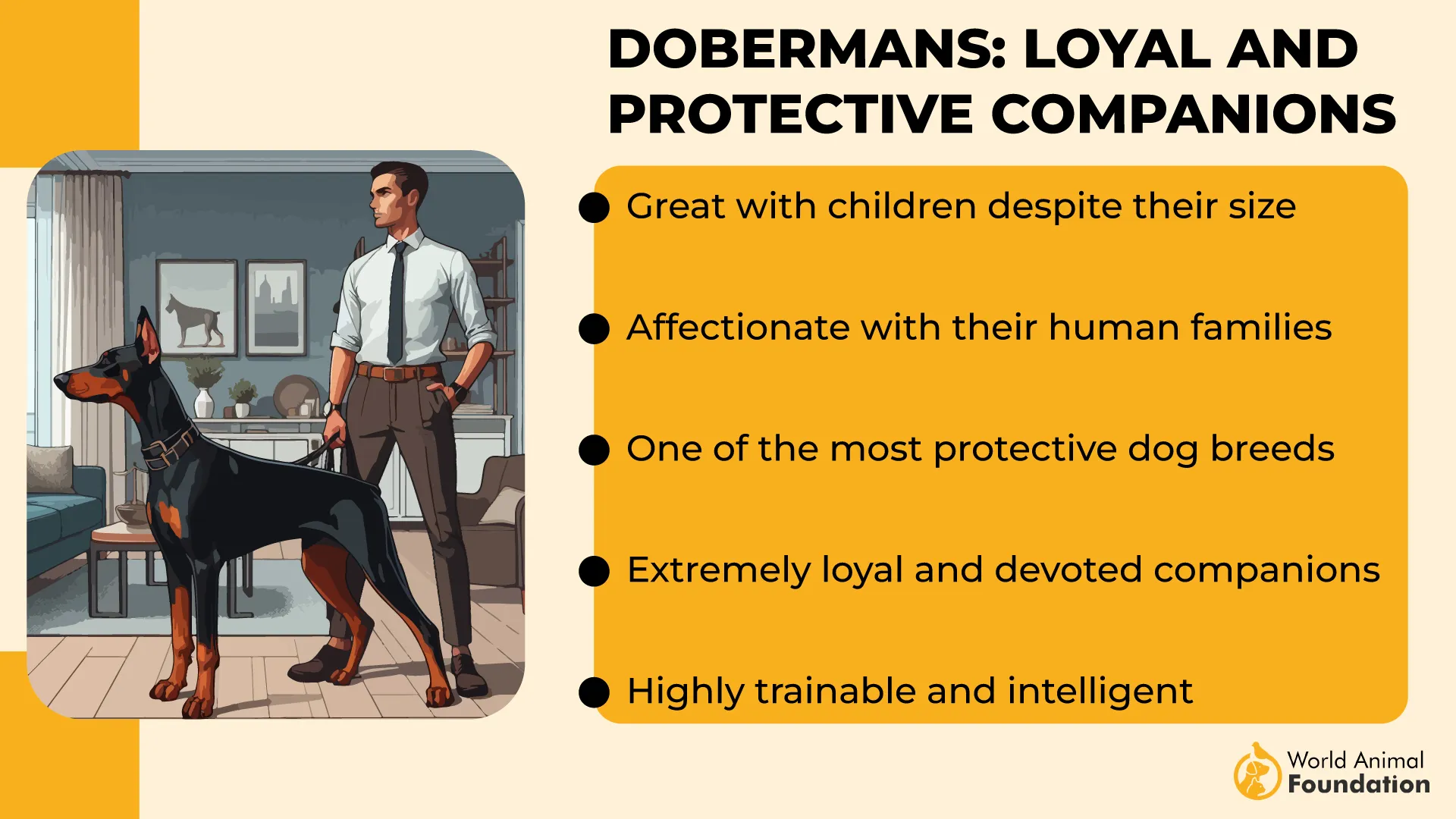
But make no mistake: owning a Doberman comes with responsibility. They need structure, exercise, and emotional connection to truly shine as the loyal, loving guardians they were born to be.
3. Australian Shepherd
Australian Shepherds are as vibrant in personality as they are in looks. Originally bred for herding livestock, these athletic dogs thrive when they have a job to do.
Whether it’s agility training, obedience competitions, or daily outdoor adventures, Aussies need plenty of physical activity and mental stimulation. Their sharp intelligence and eagerness to please make them fast learners, and they’re happiest when fully engaged with their humans.
At home, Aussies are deeply loyal and protective. That herding instinct runs deep, and they often feel it’s their duty to keep an eye on the household. While they aren’t naturally aggressive, they will alert you to unfamiliar people or changes in their environment.
Early socialization is crucial to ensure they don’t become overly wary or barky around strangers. With proper exposure and training, they become confident and well-mannered companions.
Australian Shepherds can be a bit too assertive with other animals, especially if their herding instincts aren’t channeled properly. They may nip or chase out of habit, not aggression. They’re also not the kind of dog that can entertain themselves.
Aussies rely heavily on guidance from their owners; without it, their energy can turn into chaos. Walks should be interactive—think games, tricks, and treats—not just a stroll on autopilot. If you’re ready to invest time and keep things exciting, an Australian Shepherd will reward you with unwavering loyalty, enthusiasm, and love.
4. Labrador Retriever

Labrador Retrievers are often the face of friendly, family-friendly dogs—and for good reason. They’re smart, loyal, and full of life. Originally bred as hunting companions, Labs are athletic, strong, and always eager to work.
Standing around two feet tall and weighing up to 80 pounds, they’re built for action. Whether they’re swimming, hiking, or playing fetch, Labs need plenty of physical and mental stimulation to stay balanced and happy.
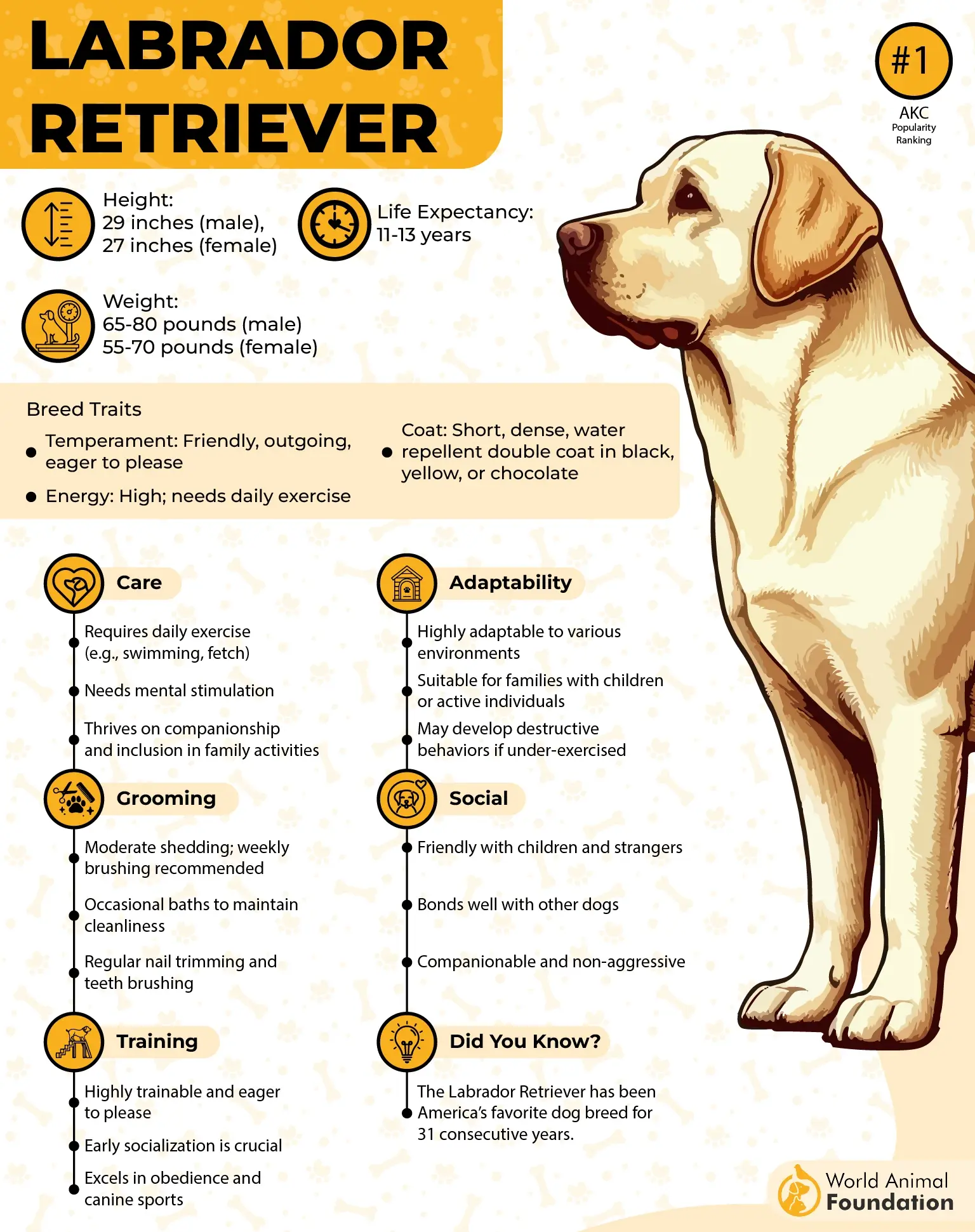
Despite their easygoing reputation, Labradors aren’t without their challenges. When improperly trained or under-stimulated, even these lovable pups can develop unwanted behaviors. Though not a naturally aggressive breed, a Lab that feels cornered, fearful, or neglected can lash out.
Given their size and a powerful bite force of around 230 PSI, any misbehavior can lead to serious injuries. In fact, they’ve accounted for about 2.1% of dog bites over a 12-year period—likely due partly to how common they are in households.
Training plays a huge role in a Lab’s temperament. Assuming a dog doesn’t need guidance simply because it’s “nice” is a common mistake. Labs are active, mouthy by nature, and often overly enthusiastic, especially as puppies.
Labs also have a natural urge to chew—blame it on their heritage of retrieving fish and birds. A Lab without access to toys or proper outlets will find its own entertainment (hello, chewed shoes).
Rather than punishing this behavior, it is key to understand their instincts and set them up for success. With the right guidance, Labs are playful, loyal companions—but like any breed, they thrive best with structure, engagement, and responsible ownership.
5. Pit Bull
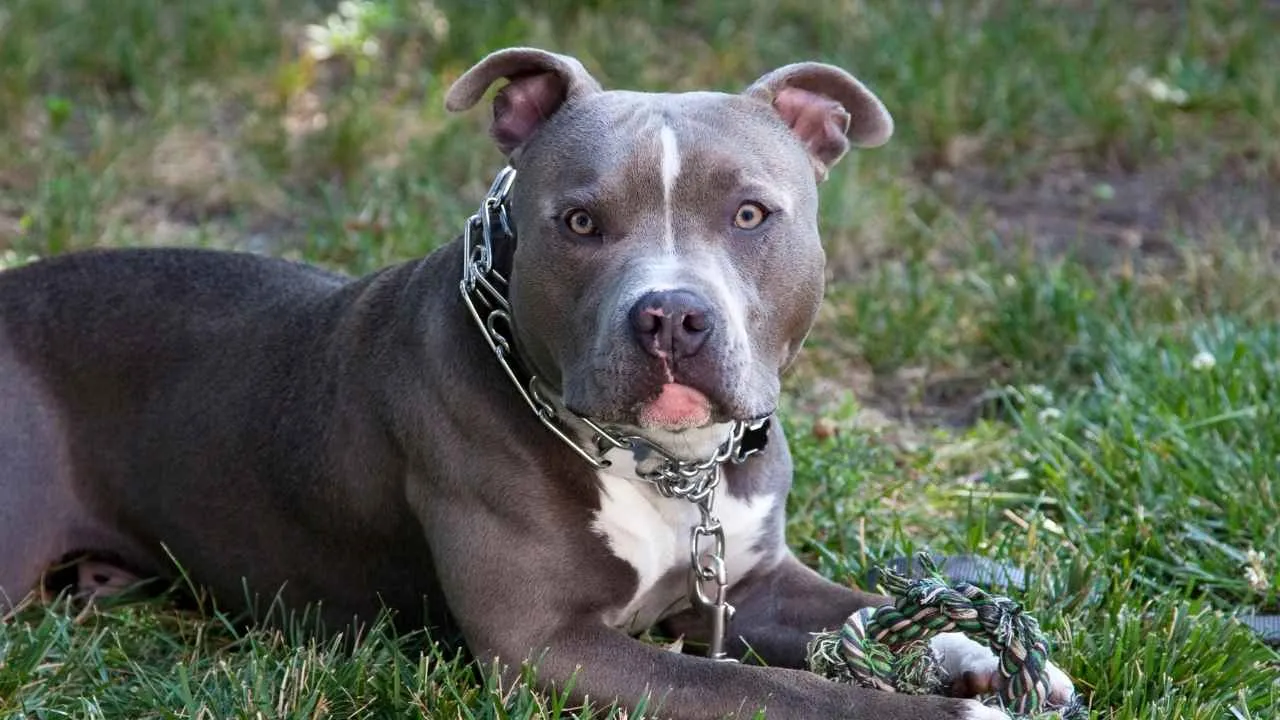
Pit bulls are among the most debated dog breeds in the world, largely because of their complicated history. Originally bred for fighting dogs in bull-baiting, these dogs were trained to be strong, tenacious, and fearless, states Britannica.
While early breeding focused on aggression toward other dogs, not humans, years of mistreatment and unethical training practices have shaped public perception. Unfortunately, some breeders encouraged violent behavior, leading to a troubling reputation that still follows the breed today.
Despite the headlines, many pit bulls are affectionate, obedient, and eager to please. Loyal to a fault, these muscular companions often form strong bonds with their families. They’re playful, energetic, and enjoy being active.
In the right home, with proper training and structure, pit bulls can be loving family pets. However, because of their strength and drive, they are not the best choice for inexperienced owners or households with small children unless those homes are prepared to manage the breed’s unique needs responsibly.
Pit Bulls have been involved in a significant number of fatal bites, a reality that highlights the importance of responsible pet ownership. With a bite force estimated between 235 and 260 PSI and a muscular, powerful build, this breed requires careful handling and proper training.
Dog bite statistics suggest over 4.5 million people are bitten by dogs in the U.S. each year. From 2010 to October 2023, data from Colorado Injury Law shows 478 fatal dog attacks; 196 of them were pit bull attacks, plus an additional 49 linked to Pit Bull mixes, making pit bulls one of the most dangerous dog breeds.
While most pit bulls live peacefully, if aggression does occur, their physical power means the consequences can be devastating. Their temperament varies by individual, but potential owners must understand: this is a dog that thrives with training, supervision, and lots of love—never neglect or abuse.
6. Rottweiler
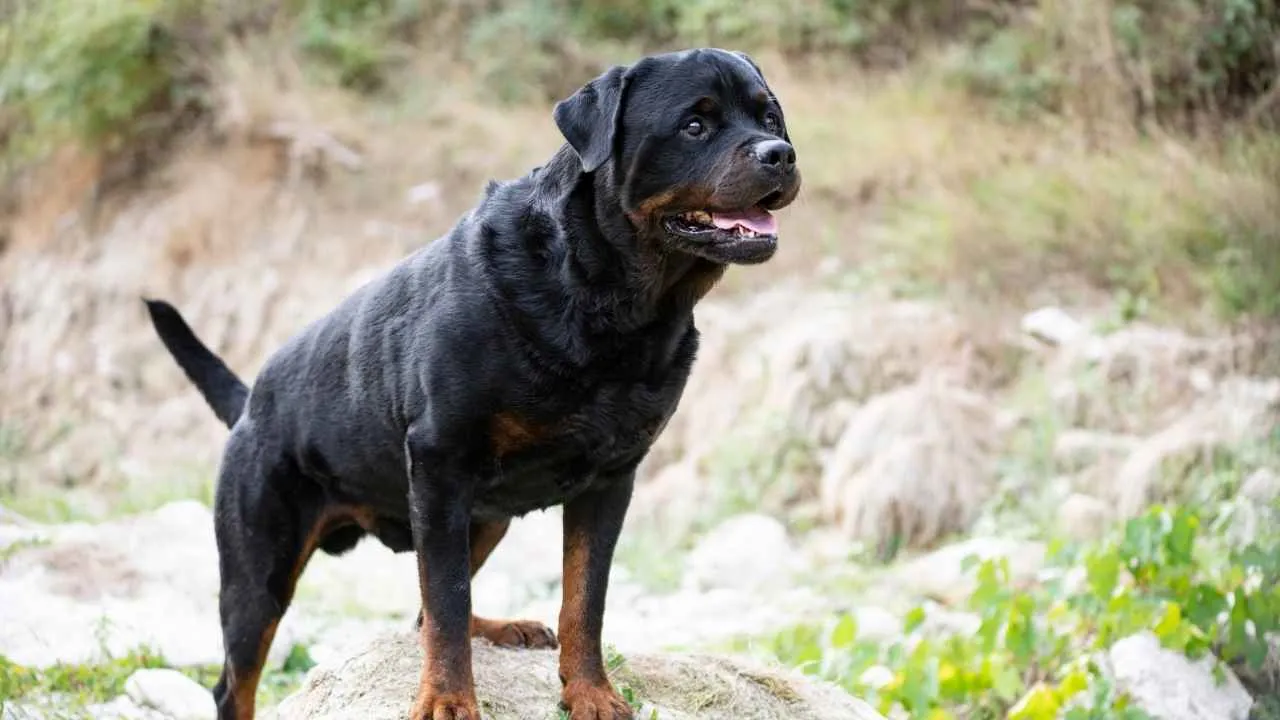
Rottweilers are among the oldest surviving dog breeds, believed to have descended from dogs used by the Roman legions. These strong and dependable companions once travelled alongside soldiers, herding livestock, and guarding supplies.
Over time, they became known as drover dogs, trusted to drive cattle and protect them from thieves and predators. In the German town of Rottweil, they pulled carts filled with butchered meat to market, earning the nickname “Rottweil Butcher’s Dog.”
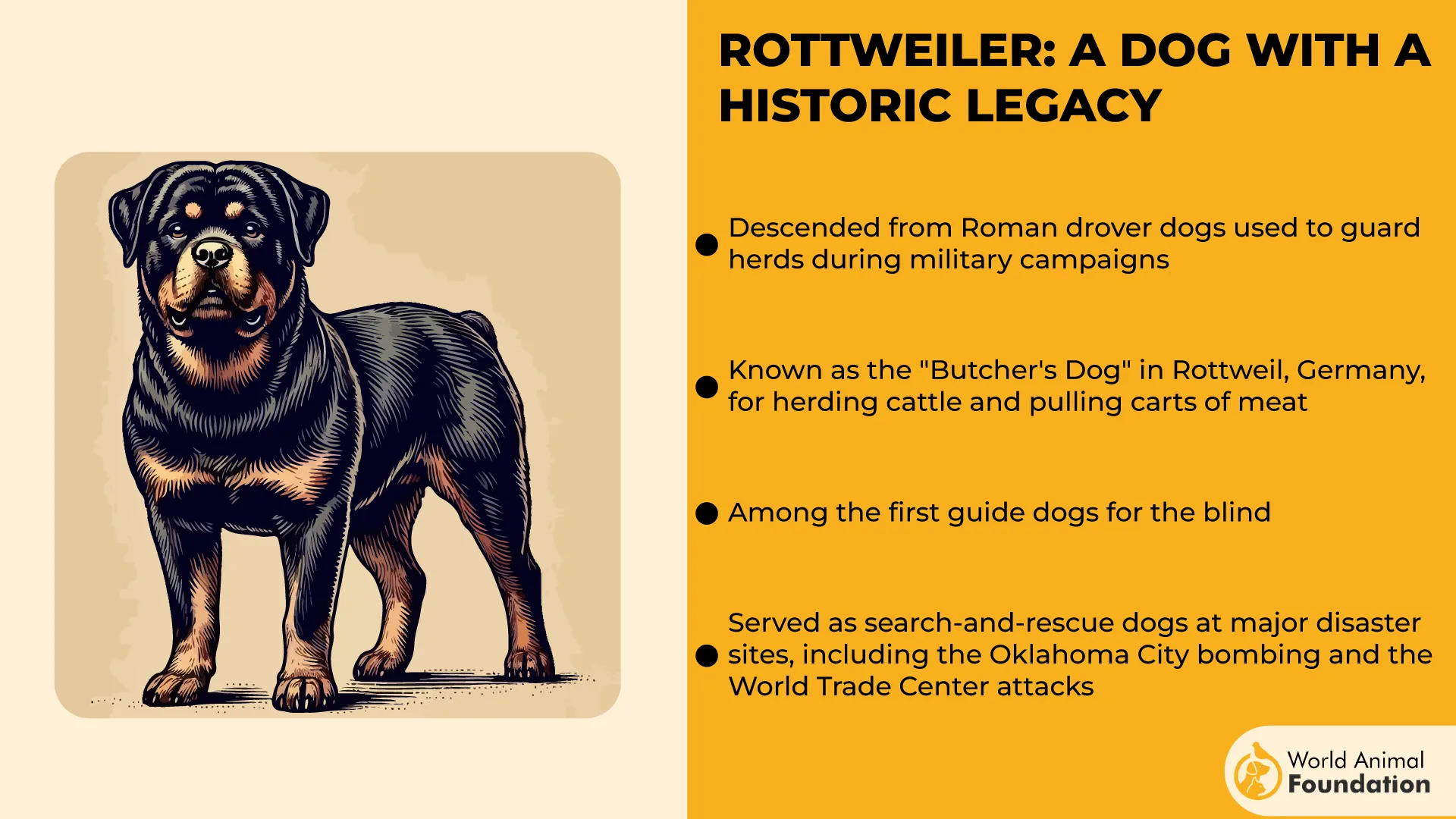
As farming declined and industrialization took over, the demand for herding and draft dogs faded. Yet, the Rottweiler’s strength, intelligence, and loyalty helped them transition into military and police dogs before World War I. They served as guard dogs, messengers, and even ambulance assistants. Today, while many live as family pets, their working instincts remain strong.
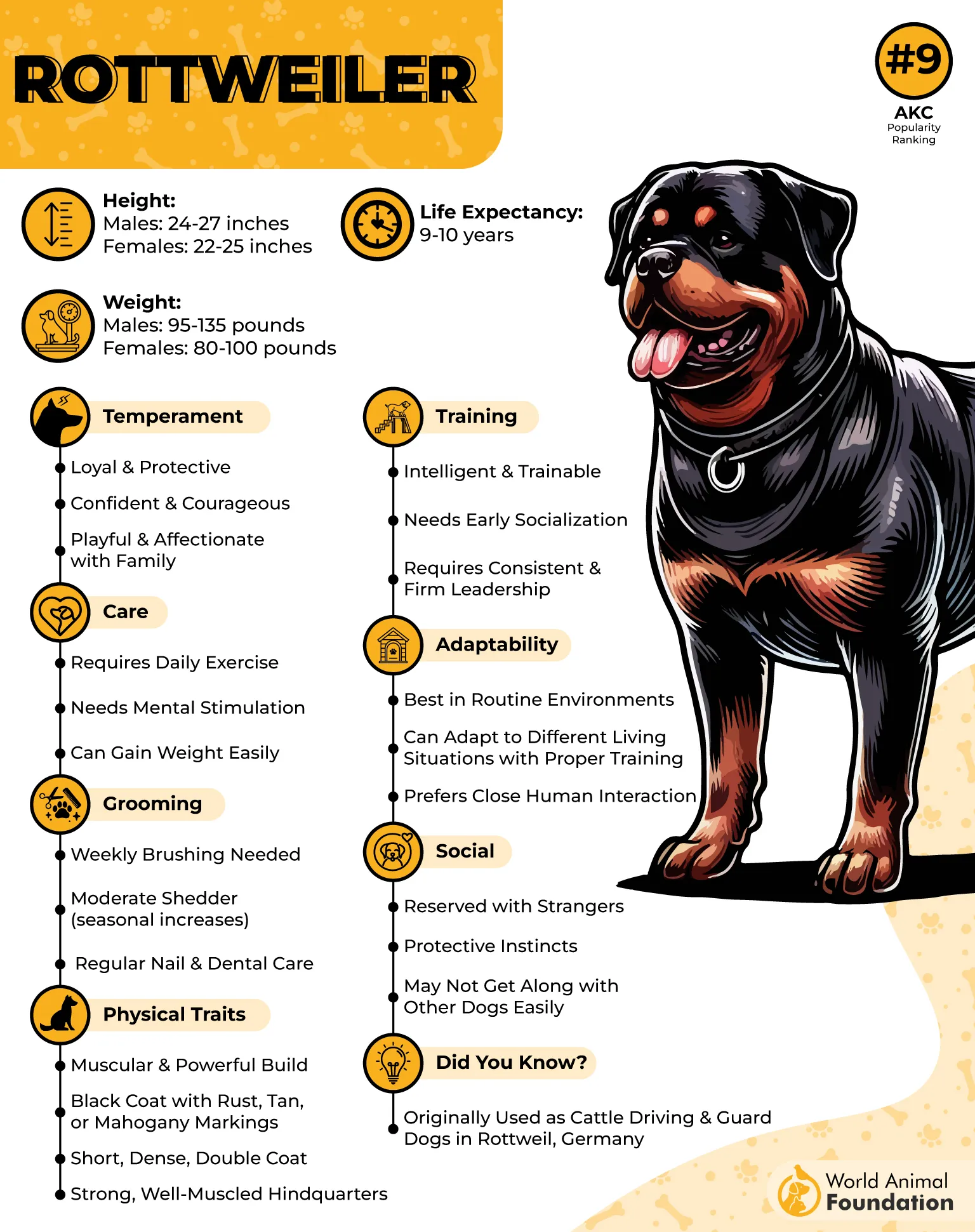
Rottweilers are naturally devoted to their families. They thrive on purpose-driven activities, needing both mental and physical engagement to stay balanced. When understimulated or poorly socialized, this drive can show up as reactivity, such as barking or lunging, which is often misinterpreted as aggressive behavior. In most cases, it’s simply alertness or excitement.
Rottweilers are powerful dogs and need confident, experienced owners. They can weigh up to 120 pounds and have a bite force of about 328 PSI. Although they make up only 6% of the total dog population in the US, they’re responsible for 77% of all dog bite incidents, mostly because they are poorly trained or neglected. These numbers highlight the need for responsible ownership, not breed-based fear.
Despite their tough image, Rottweilers are affectionate and gentle. They do best in calm, structured homes with plenty of exercise, affection, and clear guidance. While not ideal for first-time dog owners or chaotic environments, they thrive with families who understand their needs.
Research shows that only a small part of a dog’s behaviour is tied to breed. Much of Rottweiler’s negative reputation stems from media portrayals, not reality. They are not naturally aggressive—just protective and strong-willed.
7. German Shepherd
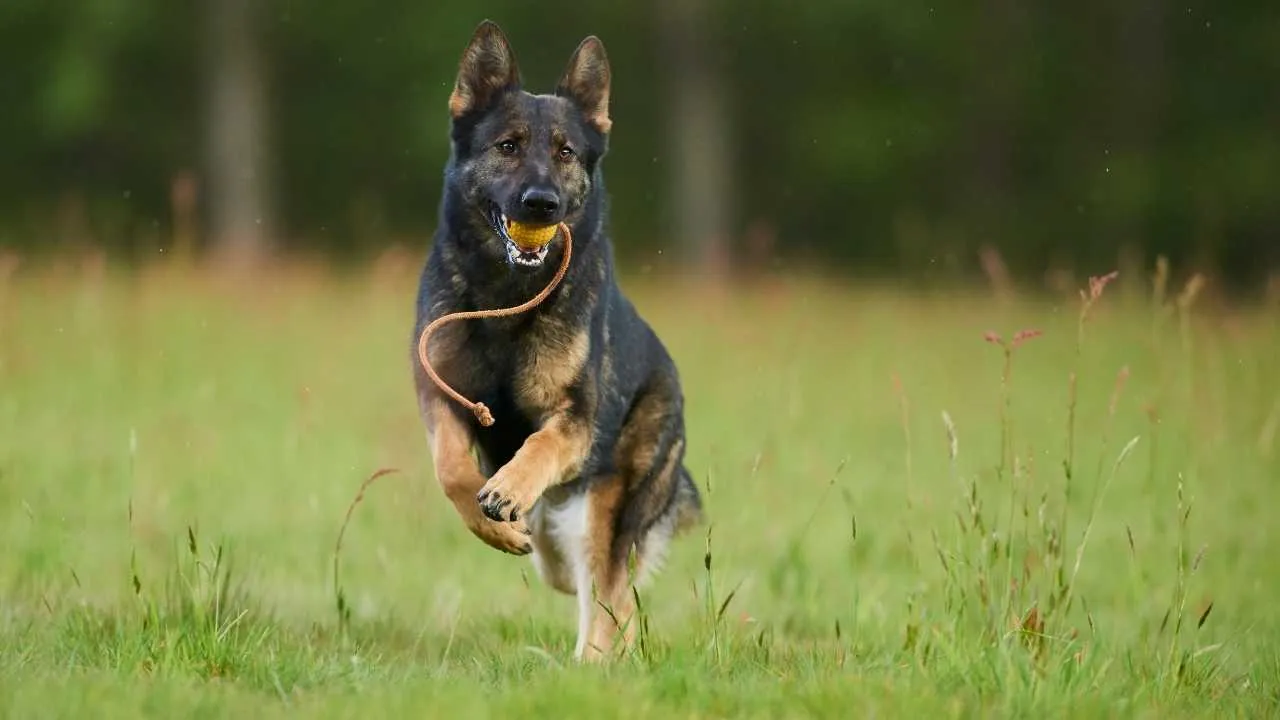
German Shepherds are iconic working dogs, often seen alongside police officers, military handlers, and families seeking a loyal protector. Known for their sharp intelligence and alert nature, they excel in tasks that demand focus, obedience, and courage. Their protective instincts, while valuable, can sometimes lead to dangerous behaviour issues if not channelled properly, especially in inexperienced hands.
These dogs are powerful, weighing up to 90 pounds with a bite force ranging between 238 and 291 PSI. They are swift, athletic, and highly capable of defending their territory or family if they sense danger.
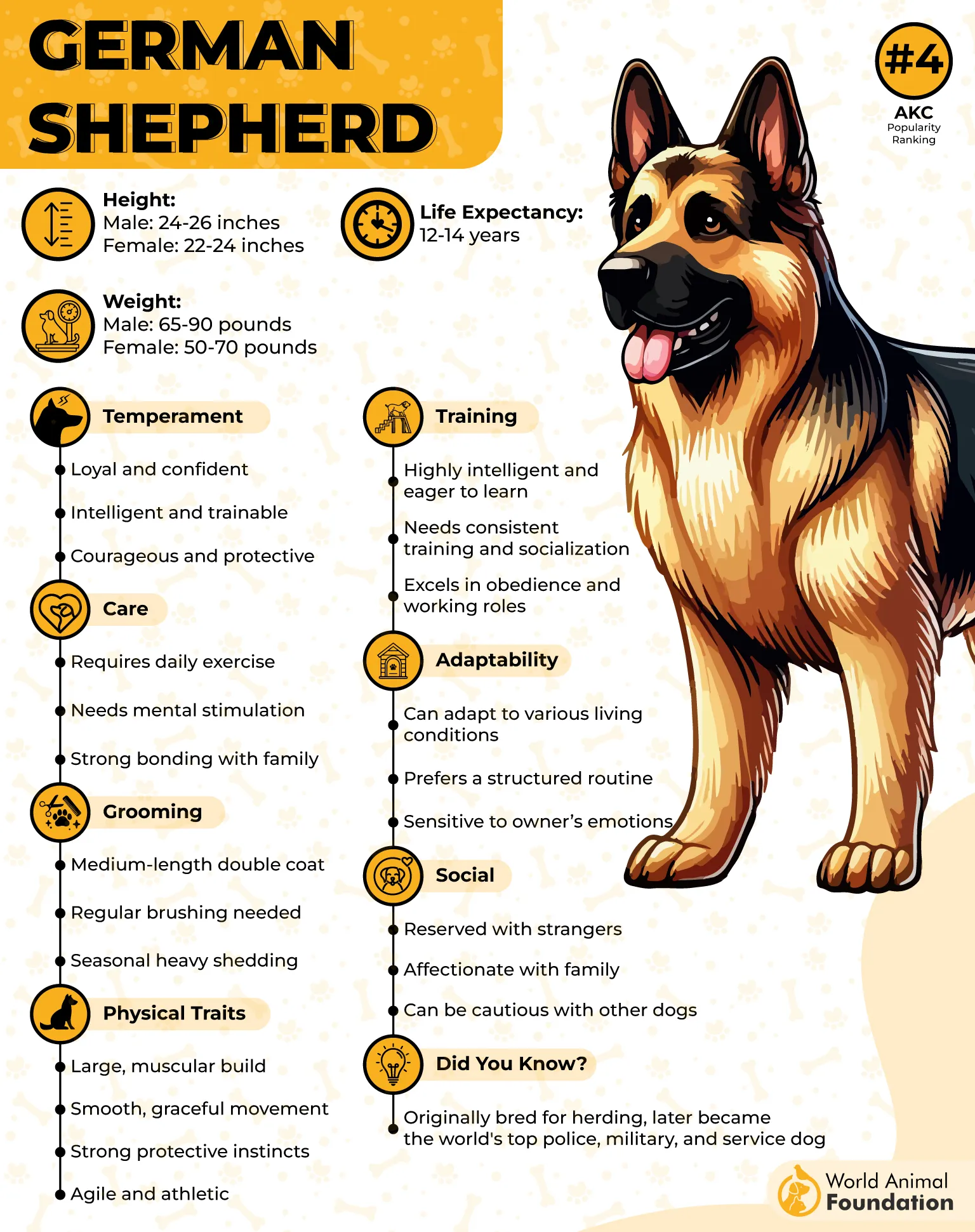
Due to their strong prey drive, German Shepherds may not be the best fit for homes with small animals—unless raised together from a young age. Early socialization and consistent training can help them coexist peacefully, but they’re generally better suited for experienced owners who can provide firm, confident leadership.
German Shepherds often appear in aggression studies because of their popularity and visibility, which can skew perception. Smaller breeds like Chihuahuas and Dachshunds display higher aggression in behavioural studies, though their bites rarely cause serious harm. In contrast, a German Shepherd’s strength makes any incident more impactful, even if less frequent.
The early weeks of a German Shepherd’s life are crucial for shaping temperament. Puppies should stay with their litter for at least eight weeks, during which responsible breeders expose them to normal sights and sounds. This foundational socialization helps reduce fearfulness and reactivity as they grow.
Conclusion
In conclusion, while certain breeds, such as the American Pit Bull Terrier, American Bulldog, and Rottweiler, are frequently listed among the most dangerous dog breeds, it’s important to recognise that breed alone does not determine aggression. Many serious dog bite injuries result from poor ownership, lack of training, and failure to properly socialize a dog, not just breed traits.
Statistics show that mixed-breed dogs and other commonly labelled aggressive dogs can also be involved in reported dog bite incidents, especially when they’re not properly trained or managed. Dogs like Chow Chows, Alaskan Malamutes, and Siberian Huskies—though originally bred as sled dogs—have strong instincts that can turn dangerous without structure and guidance.
Ultimately, dog bite injuries and fatal attacks are preventable when pet owners take responsibility. Blanket bans or breed-specific legislation ignore the broader truth: any unfamiliar dog can be dangerous if neglected, while even the most dangerous breeds can be loyal, safe companions when raised right.


